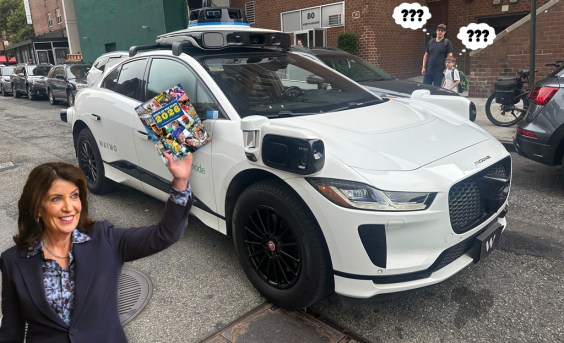New ridership is the holy grail of many a transit planner. It’s a demographic with strong allure — catch a newbie and you potentially remove a car from congested streets, give the environment a boost and, of course, increase revenue.
While there are many compelling reasons for chasing new transit customers — not to mention federal incentives — more often than not, the pursuit involves expanding service via new construction. Engineer Scotty at Network blog Portland Transport points out the inherent problem in privileging the new rider over existing users:

Portland's Tri-Met is plowing ahead on construction of the Milwaukee MAX passenger rail line. Expanding service is great, but it will do nothing for the majority of those who already use Tri-Met's services, says Engineer Scotty at Portland Transport. Photo: The Outlook Online
While many objections are given (some of which, such as concerns over transit workers’ jobs and allegations of pork-barrel projects, won’t be further discussed in this article), a common theme seems to be that TriMet is spending most of its money trying to attract new riders, when it should be improving the lot of existing ones. Many existing riders would rather see money spent on improving existing services in the system core, or providing basic service to areas where none presently exists, rather than building expensive rail lines out to suburban park-and-rides.
In some ways, TriMet acts like telecom companies offering teaser rates to new subscribers, while insisting that loyal customers pay full price (unfortunately, rewarding loyal customers with higher prices is a time-honored tradition in business). TriMet is hardly unique — transit agencies over the world have the bad habit of segmenting their ridership into “choice” and “dependent” riders, and then focusing energy on the former while taking the latter for granted.
Ridership (and new ridership) is also used in ex-post-facto evaluations and analyses of transit projects and modes. A recent post here at Portland Transport, Can We Intersect the Politics of Bikes and the Politics of Thrift, contained the following factoid: Regional spending per new commuter, 1995-2010: bike/ped $5,538, auto $18,072, transit $84,790. Yes, read that again.
Portland Transport goes into quite a bit of detail about the new-rider paradox. We recommend reading the post in its entirety. Meanwhile, what do you think?
Elsewhere on the Network today: Deron Lovaas at NRDC’s Switchboard blog makes the case for devoting revenues from terminated oil subsidies to projects that reduce U.S. dependency on petroleum. Rights of Way details a major transit-oriented development proposal in Portland, Maine. And the Cascade Bicycle Club reports on a Seattle architecture firm’s strategy for encouraging cycling: paying $1 to local biking groups for every mile logged by employees on bicycle month.





